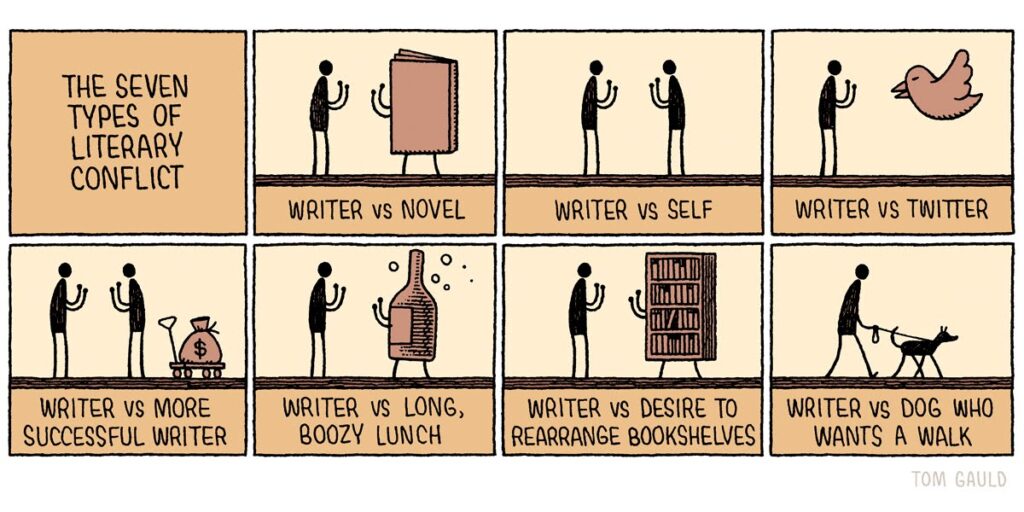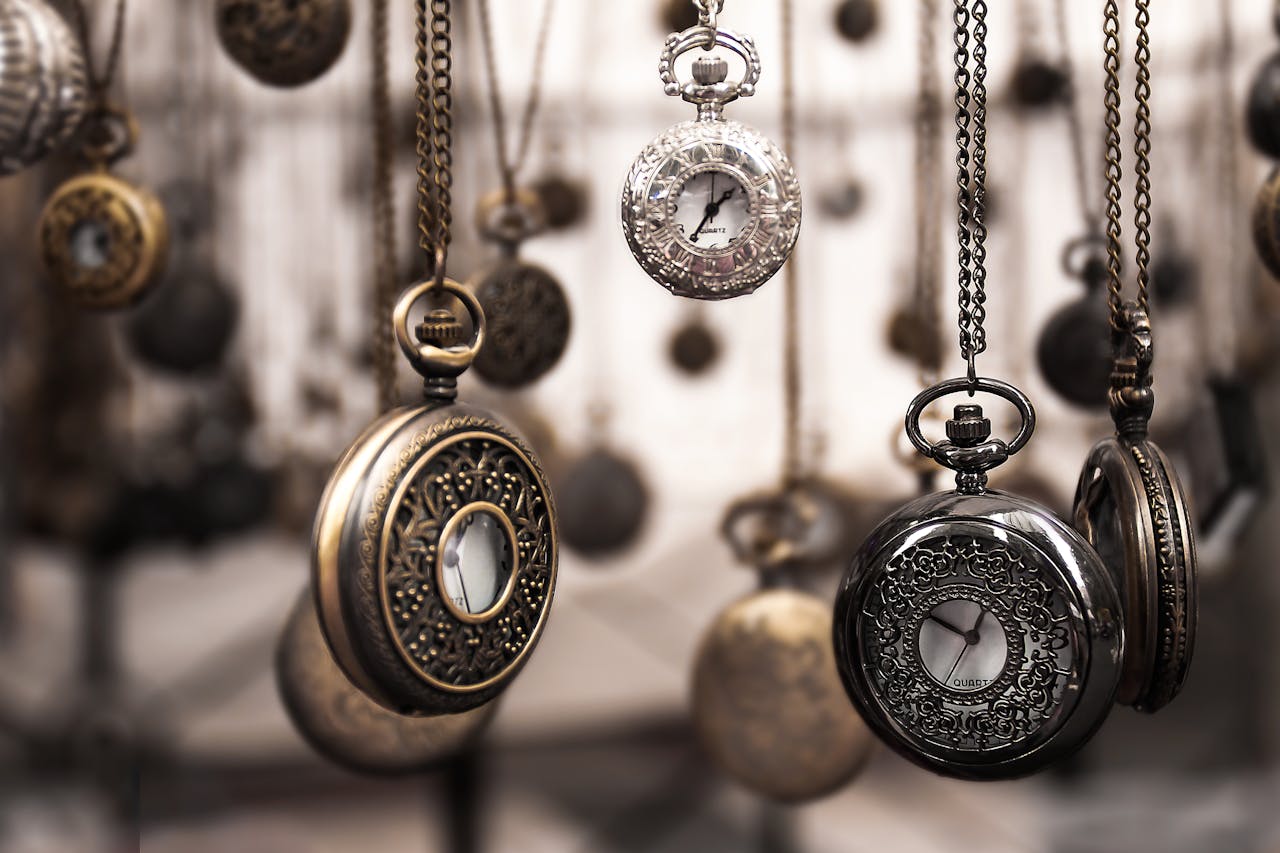This again feels like me throwing my two cents into a wishing well overflowing with dimes from other more accomplished, more experienced writers. (Have you ever noticed your two cents is your paradigm?)
But character is, I believe, one of if not the key element in creating an engaging story. Sure, if you completely bomb on another aspect of the story, people aren’t going to like your writing. But if the rest of your story is mediocre and your character work is on point? That’s gold.
Interestingly though, I think character is one of the easy things to fake. At least when you’re writing in first person or third person limited. For those not versed in story Point of Views, first person is as though the character themselves is telling you a story. Think “Call me Ishmael.” That doesn’t mean the narrator character has to be the main, central character, of course; Ishmael certainly isn’t.
Then there’s third person limited, one that’s used a lot these days. That’s neither a good nor a bad thing, it’s just a current trend. Trends are not good or bad for being popular, they just show the zeitgeist of the moment.1 Third Person Limited basically is first person but without all the “I” and “Me” pronouns. You see the book through the lens of a particular character.
Both of these strategies have pros and cons but that’s for another post. Either way, the point of view character who feeds us the world has the same downfall that a newspaper horoscope has. Letting the reader step into the shoes of the character lets them bring all of their own views, downfalls, qualities, and judgments to the story without requiring that the character actually have any of their own. It’s called self-insert and it’s fabulously successful in romances and so forth. But it doesn’t make for good character.
The thing that drives character is conflict. And I don’t just mean punching people. No, not just swinging swords or zapping magic or shooting guns either. I mean literature class “Man Vs Nature, Man Vs Self” stuff.

Okay, not quite the above type of conflict. But still. Picture the character as a puzzle piece and the world as basically a clay mat with a rough area cut out. The character should not fit into the world like a puzzle piece falling into a slot. There should be edges that rub against each other, edges that leave gaps, areas that almost fit but one or the other has to give way to make room. You know. Conflict.
I was listening to an episode of the podcast Your Mom Writes Books with Charlie Holmberg and Caitlyn McFarland a while ago (and if I searched I could probably find the episode but instead I’ll make you search! Then you can find more good stuff that they talk about!) where they talked about character and how they build characters. This led to the creation of the character sheet I’m going to link here and spend the rest of the post describing and explaining.
Download available here. Yes it’s free! If it wasn’t I’d try to make it pretty!
The first section is self-explanatory. I left a box for an image; I find it helpful to have an idea of what a character looks like. You don’t have to draw them yourself! If you don’t want to or don’t feel up to it, get a friend to do it or browse stock photos or use Heroforge or another character creator or (with great discretion) do an image search with some keywords or find old magazines if you have any of those and cut out the face of someone in there. Then quantify them. Pin them down with numbers.
At this point I want to add a caveat. Filling out this sheet for every side character is overkill. I would do this for the main, maybe five? characters tops; beyond that, half is all you need for good second-tier characters and maybe just a picture and a few data points for anyone who’s between there and “just need a name for the cashier” level. Pushing someone to prominence later? Sounds like a great time to pull out the sheet and re-up.
The next category is about their problems. Where they rub the world wrong. I’ve stolen Katie and Charlie’s method which they stole from someone else and we’ve both tweaked it, I’m pretty sure. Fear, Wound, Goal, Lie, Flaw, Secret.
Fear- what are they afraid of? What keeps them awake at night? What would motivate them to act?
Wound- what in their past has left a gap between them and the world that they don’t know how to fill?
Goal- What do they want out of life? A cozy armchair and a nice garden? Power? What gets them out of bed in the morning?
Lie- What do they believe that’s just wrong?
Flaw- What in themselves do they think is fine but, when poked or agitated, reveals their problems?
Secret- What do they want people to never know about themselves?
At least 2 or 3 of these should be big. Deep. Momentous. Enough to throw wrinkles in your plot. But all of them should be more than surface level. Their fear shouldn’t be “snakes” unless it’s an absolute pathological horror that would make them sacrifice their firstborn rather than look at a snake.
Each of these also asks “Do they change over the course of the story?” Yes or no? Better or worse? What precipitates the change and what are the consequences? And seriously, worse is often a good thing here. Readers want movement in a character arc but not all movement has to be upward. And it can be gut-wrenching in a good way to see a character we love slip.
Quirk. What makes them unique? Think about your friends. There’s something about your friends that makes them different than others. My husband likes blue. Not just something he’ll tick on a “tell us about yourself” sheet; he likes it to the extent that “which of these household necessities is better for us” is sometimes determined by which is bluer. (Based on a true story.) One of my friends had hair that went so far down her back that her cinnamon-bun hairstyle put Princess Leia’s to shame. (Actually not quite; Princess Leia’s was light enough to stay on her head.) But that friend also was into Civil War reenactments. One of my friends is an evil overlord and has a stuffed dragon head on her wall at home. Give us something to hang our hat on about a character (like a stuffed dragon head hat rack) and help us understand them better than “uh, they have blue eyes.”
What’s their outlook on life? Optimistic? Pessimistic? Pragmatic? Thinks they’re pragmatic but they’re actually just a pessimist and like throwing cold water on proceedings? Determined to be helpful in any situation? Gregarious to the point that sometimes they’re hard to be around? No one has a truly neutral outlook on life. What’s this person’s?
How do emotions change the way they behave? Are they the kind of person who gets energy when happy, or do they get more placid and mellow? Do they have cold, quiet anger or hot, explosive fury? Do they like a quiet laugh or do they go full cartoon-balloon Pinkie Pie when they’re excited?
Family situation and character relationships build how they interact with the world. No man is an island, no one is exempt from the web of life. Are they a building block or a weak link, and what about their upbringing helped make them that way?
Strengths. Their weaknesses have been fairly well covered in the Fear/Wound/Lie/Flaw area probably, but what are they good at? Are they a good listener or a loyal friend or completely honest or frankly just strong? What makes them any fun to be around or valuable to your story? Because even someone who’s completely evil has strengths, be it genius or craftiness. Otherwise they’re really not going to be fun to read about.
Orientation, ethnicity, disabilities if any, and their financial background all influence how they fit in to the world; these also have the benefit of making you worldbuild how these things would change a character or what influence these things have on their upbringing.
The only other note I’d make is this- don’t do all the same thing. We’re going fruit salad here, not apple basket. But also don’t make every single person the black rose in a field of daisies. Not everyone needs to be tragically or beautifully different from everyone around them. You have friends, right? What makes them individual? Remember that every single person has their own strengths, weaknesses, and things that make them blend into the whole of humanity. And you do too. Draw on that. Draw on your life and your experiences. Remember that, in the end, what will make your characters truly shine is when they feel real.
Intellectual Property of Elizabeth Doman
Feel free to share via link
Do not copy to other websites or skim for AI training
- Judging the quality of a thing based on how it fits in the world and not on its content severely bothers me. To call a book trash because it’s a manga, or a graphic novel, or a fantasy work is reductive, short sighted, and prejudiced. I’ve found deep themes and sincere emotions reading a good manga. My kid knows about the Odyssey because she was introduced to it via graphic novel. A fantasy can explore things about our world and humanity in ways that realistic fiction just isn’t capable of. None of these guarantee quality, but neither do they automatically disqualify them from merit and being worthy of study. ↩︎

